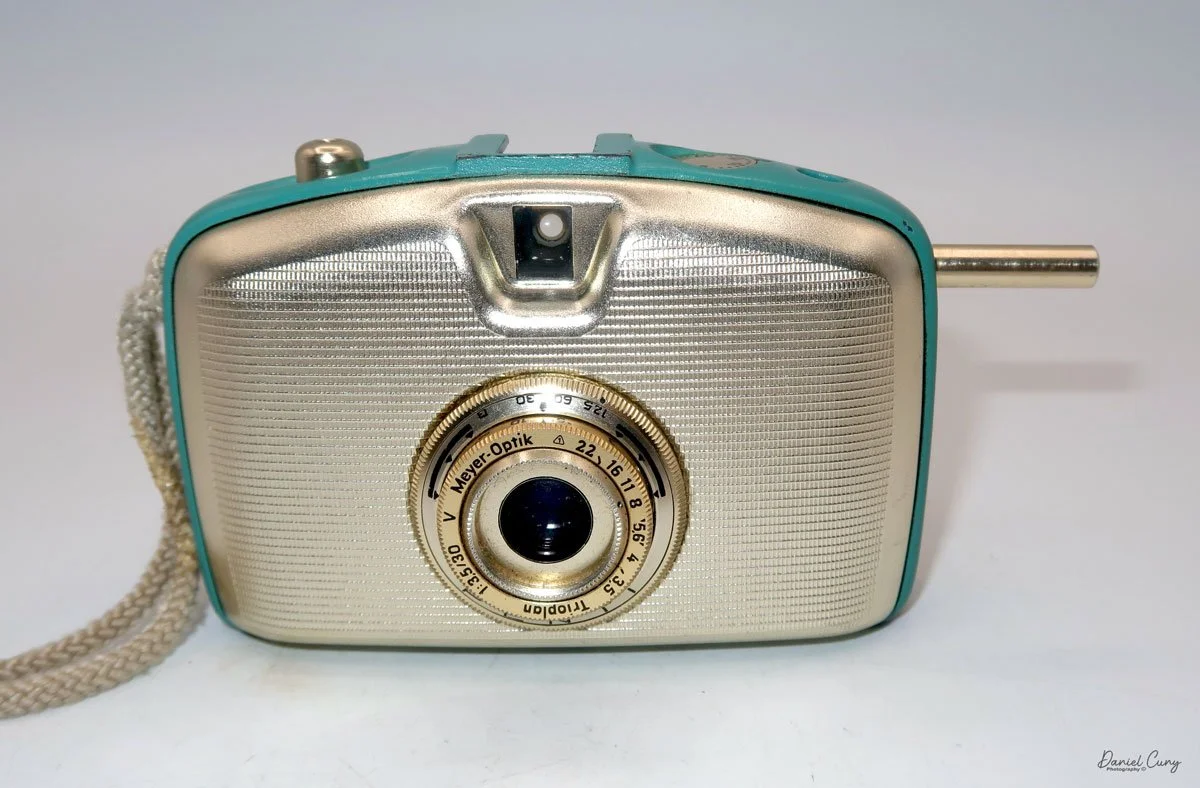My Welta Penti camera
The first time I laid my eyes on a Welta Penti camera was almost 45 years ago. I was working as a salesperson at the local camera store in our area, and someone brought in a beautiful gold-colored camera with dark red trim circling the center. I was a bit flabbergasted when I saw it. The customer had just received it from a relative and wanted to know how to use it.
At the time, I was in my early twenties, and although I had never seen one before, I started to play with it and explained the camera as I tinkered with it. I was learning about the camera at the same time. The easy part was explaining the items located around the lens, like shutter speed, focus distance, and aperture settings. Still, when I clicked the shutter, and the advance rod came shooting out of the camera, I think I let out a little gasp of surprise as the woman I was explaining the camera to just smiled and said, "That happened to me when I snapped the shutter, but I didn't know what I did".
It wasn't until I took the back off the camera and noticed that when you pushed the film advancing rod in, it engaged with the film's sprocket holes and pushed the film into the take-up cannister. The rod stayed in the camera body until you snapped the shutter again. Also, with the back off the camera, I did see that the camera took 35mm film, but not the regular 35mm film that the majority of photographers were used to, but the Agfa Rapid style 35mm film. At the time, we did sell a small quantity of Agfa Rapid film.
The brilliant gold toned Welta Penti camera with advance rod out.
While I had the camera's back off, I double-checked that the shutter was opening and closing. The aperture was operating correctly, which it was. I explained to the owner of the camera that it was called a Half-Frame camera, meaning it used only half the size of a standard 35mm camera. She would get twice the number of photos from a roll of film. If she purchased a roll of 20 exposures, she would be getting 40, 41, or possibly 42 pictures from the roll. I sold her a roll of film, loaded it into her camera, and sent her on her way.
The whole time I was holding this camera, I couldn't help but think, What a beautiful camera. Keep in mind, this was around the same time as I was starting to collect cameras and the ones that impressed me the most were camera with color, like the Kodak Rainbow, Petites and Beau Brownies camera, so a gold camera with dark red circling the camera just sort of blew my mind and I wanted to know more about them.
Fast forward 45 years, and at a recent camera collectors fair in Seattle, I purchased two Penti cameras, both in good working condition. I had previously owned a few of the Penti cameras, but sold them off years ago so when I saw them at the camera show, I thought it would be great opportunity to add them to my collection and also to write about them in one of my camera collecting blog posts.
History:
Welta Kamerawerks, a significant yet often overlooked German camera manufacturer, has a history that mirrors the turbulent narrative of the 20th century in its Dresden-area home. Founded in 1914 as Weeka-Kamera-Werk by Walter Waurich and Theodor Weber in Freital, a suburb of Dresden, the company was renamed Welta-Kamerawerk Waurich & Co. in 1919. From its inception, Welta carved out a niche for itself by producing a wide array of high-quality, medium-priced folding plate and roll film cameras, putting it in direct competition with other German contemporaries, such as Balda and Certo.
Welta Kamera Werks
Before World War II, Welta was known for its solid engineering and innovation. The company produced a range of popular models. Still, it was cameras like the high-end Weltur series that cemented its reputation. Introduced in 1935, the Weltur was a sophisticated folding camera featuring a coupled rangefinder. This design element positioned it in direct competition with premium brands. Welta also ventured into more ambitious designs, creating the unique folding Twin-Lens Reflex (TLR) cameras, the Perfekta (6x6) and Superfekta (6x9). Though not commercial successes, these models are now highly prized by collectors for their fascinating design and mechanical complexity. Many of their cameras were offered with high-quality lenses from renowned makers like Carl Zeiss and Schneider-Kreuznach, appealing to serious photographers.
The aftermath of World War II dramatically altered the company's trajectory. Located in what would become East Germany, the Welta factory was dismantled and its equipment sent to the Soviet Union as part of war reparations. However, production managed to restart by 1947 under the new state-controlled entity, VEB Welta-Kamera-Werk. The company continued to produce successful pre-war designs, such as the Welti 35mm folder. It absorbed other nationalized firms, including the Richter company in 1950, which led to the development of the successful Reflekta TLR series.
Despite its resilience, the era of consolidation in the East German photographic industry marked the end of Welta's independence. In 1959, VEB Welta was merged with several other Dresden-based camera makers, including Belca and Altissa, to form the massive conglomerate VEB Kamera- und Kinowerke Dresden, which would later become the famous Pentacon. Following this merger, the Welta name, which had defined quality German cameras for over four decades, gradually disappeared from the market, marking the end of a significant chapter in photographic history.
My dark red and turquoise Welti Penti cameras
The Welta Penti was introduced in 1959 and produced until 1977 with a few modifications. In 1961, the Penti I and Penti II were introduced. The Penti I had a broader front viewfinder area and small knobs on the lens to control the different lens functions, like aperture and shutter speeds, and the Penti II was similar to the Penti I but incorporated a selenium cell light meter.
All Penti cameras are 35mm, half-frame cameras that take an 18x24mm image in a vertical format. The Penti and Penti I cameras have a Meyer-Optik Tripolan 30mm f/3.5 lens. The Penti II has a Domiplan 30mm f/3.5 lens.
The 28mm to 30mm is considered a standard lens for the half-frame style cameras. The Welta Penti cameras came in different colors; all had a brilliant gold-toned camera body, but the band around the camera came in black, dark blue, turquoise, dark red, or white.
My Camera:
My Welta Penti is a small and compact camera, making it another fantastic option to keep in your pocket or jacket, ready to take photos. The camera measures 4.25" wide by 2.75" tall and is only 1.5" deep, weighing 8 oz. A metal lens hood and case are available for the camera, but unfortunately, my camera does not have either one.
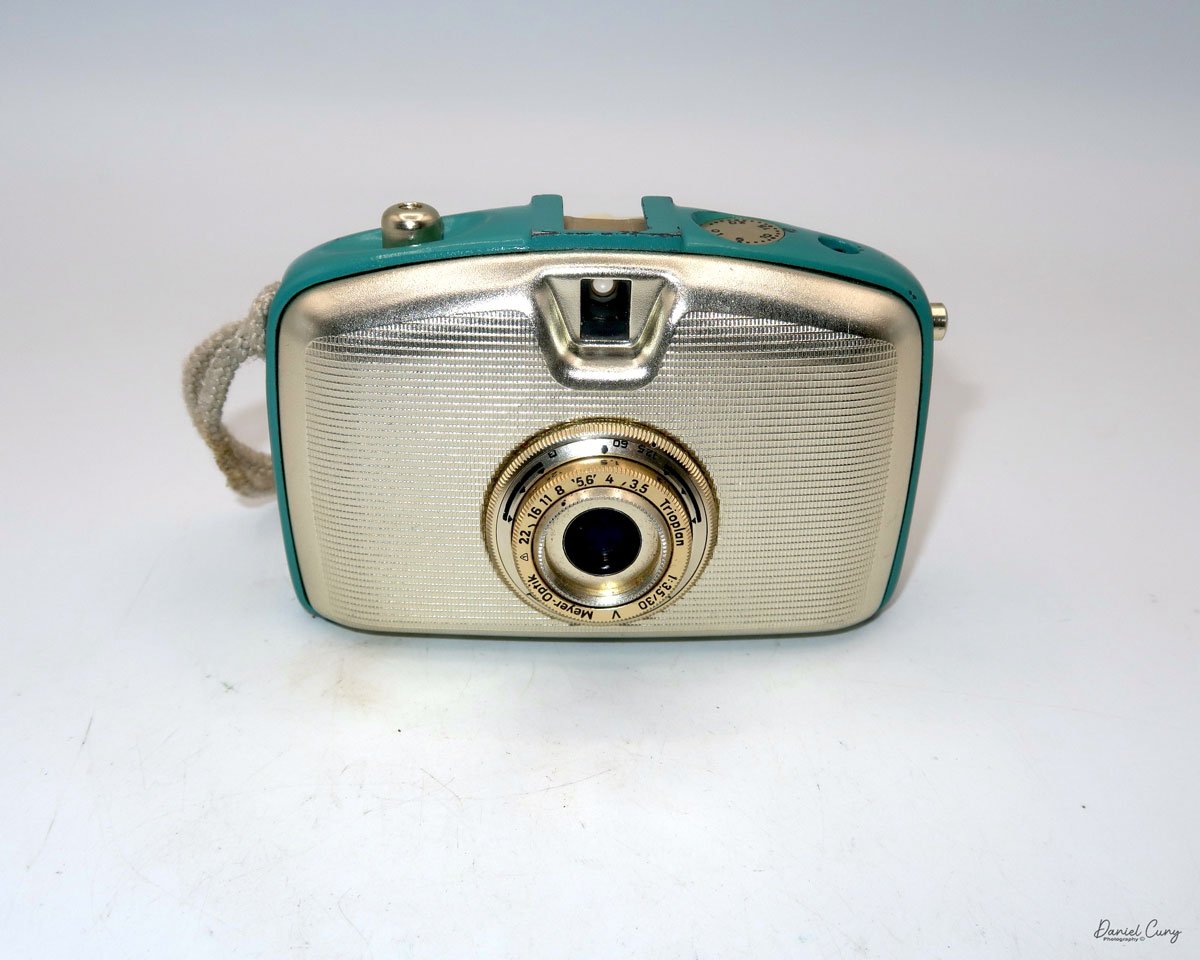
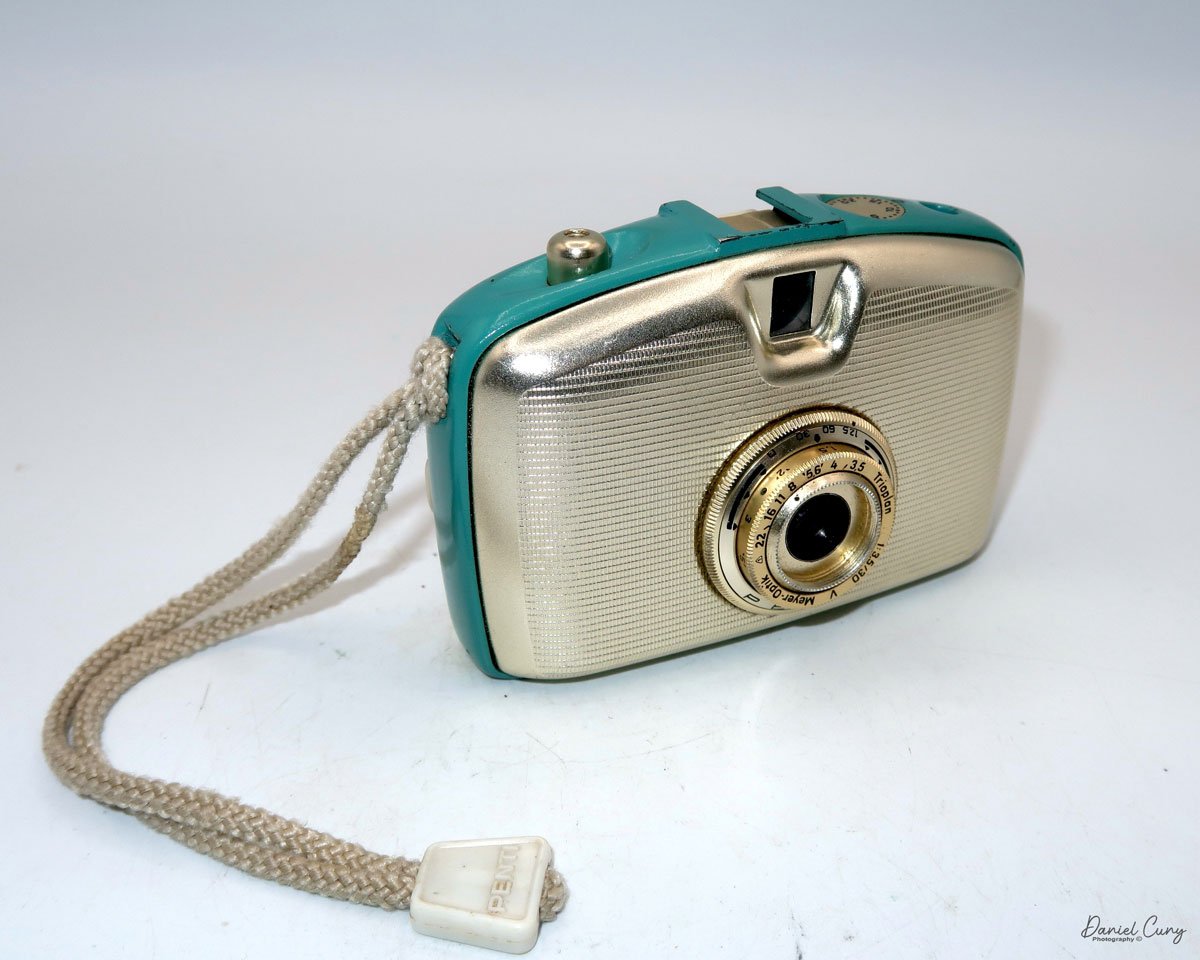


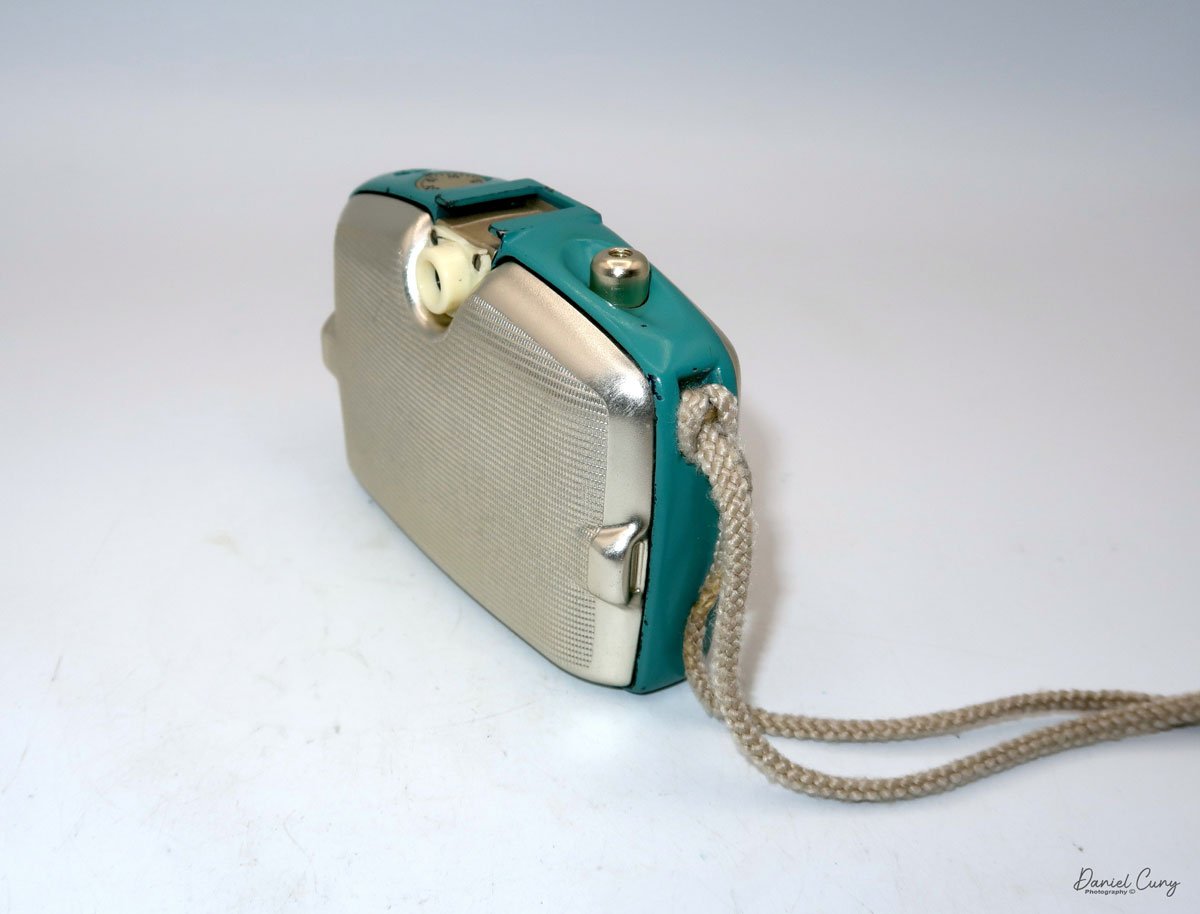


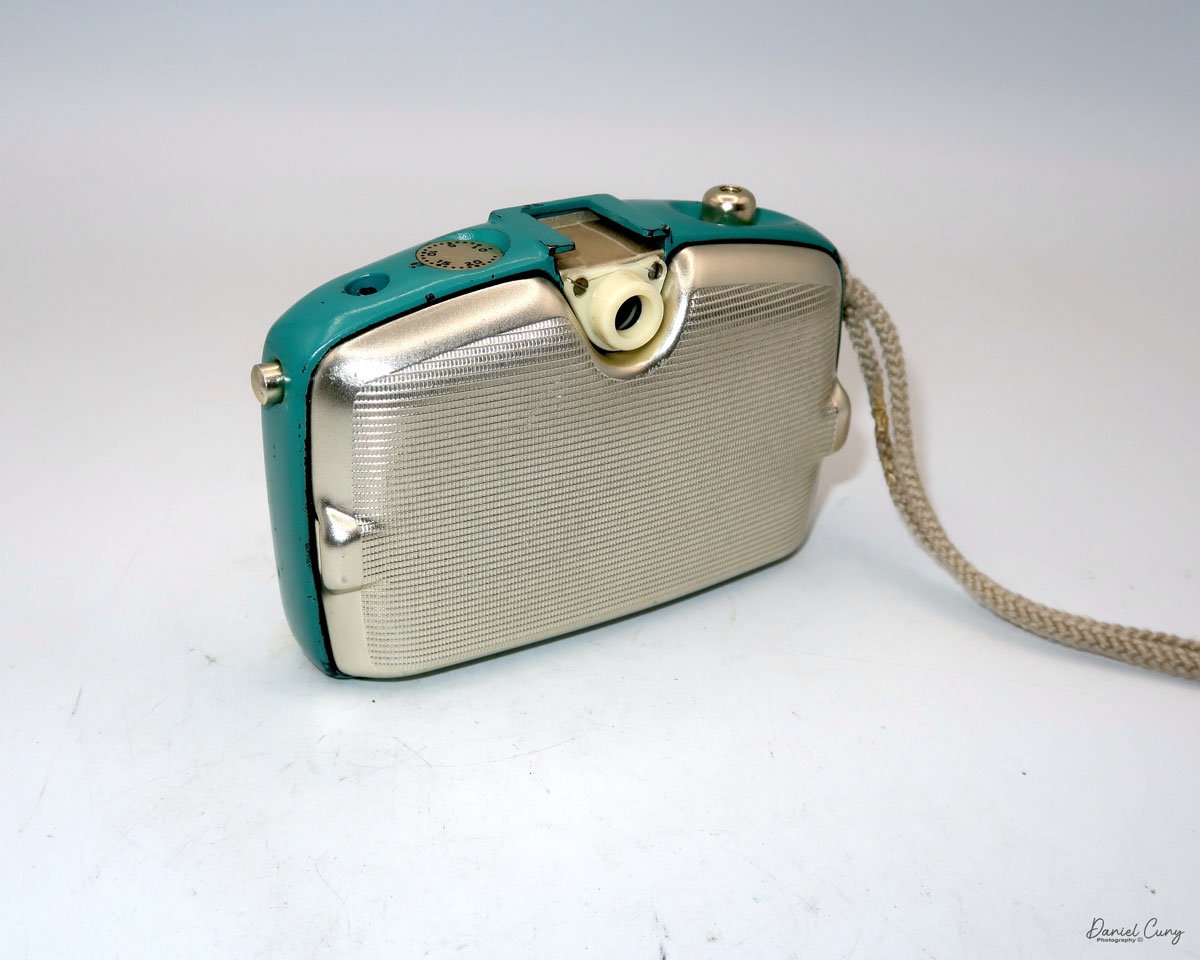
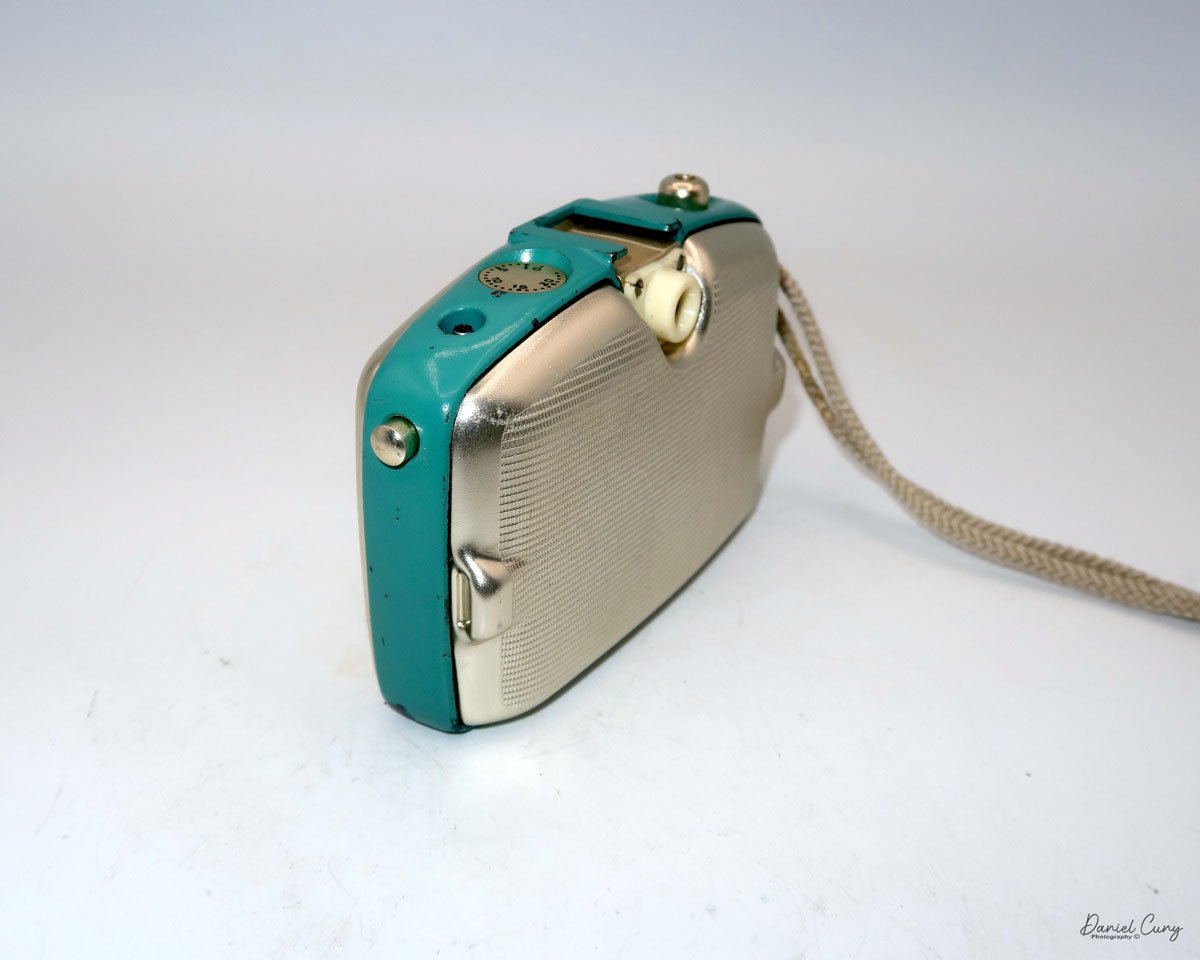
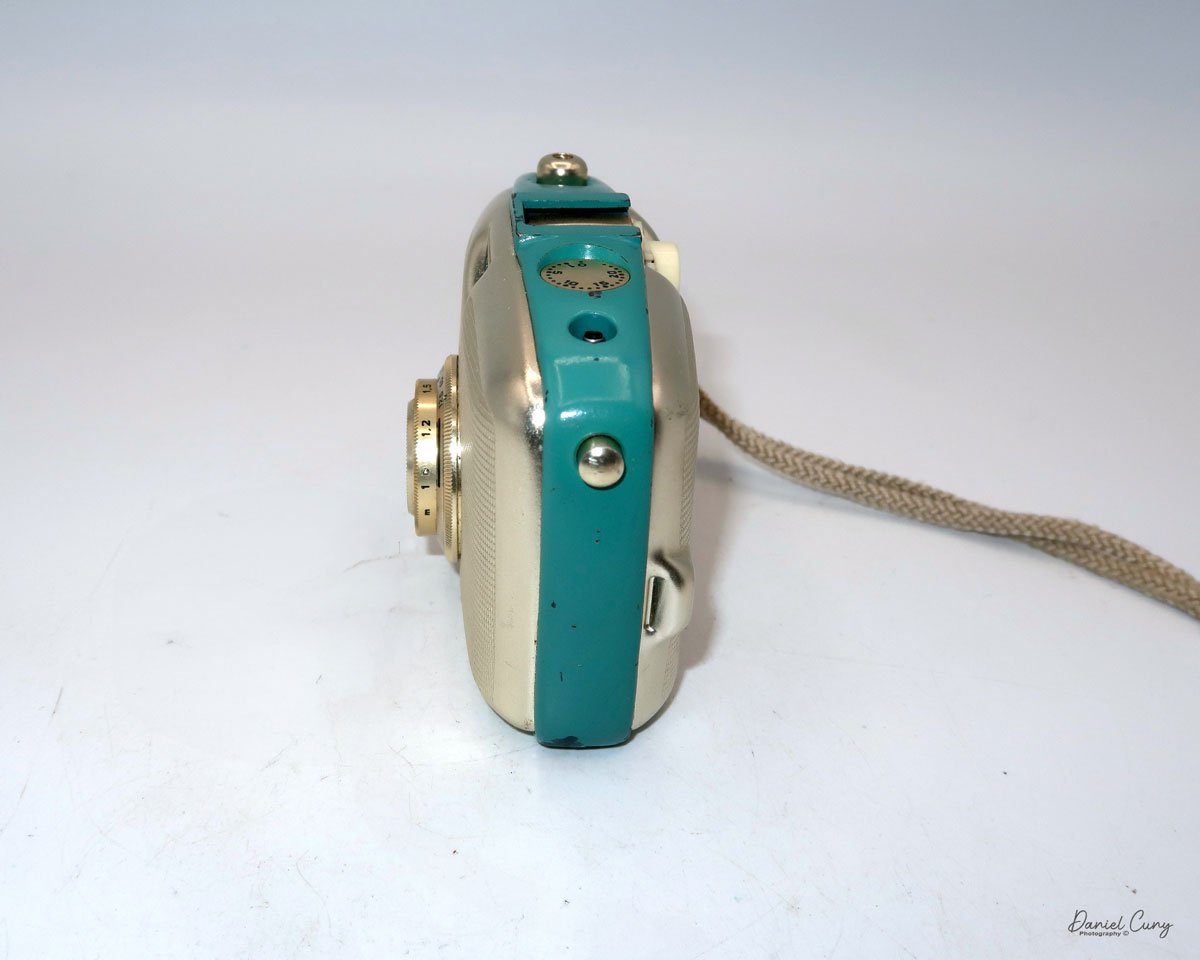


Around the lens, and closest to the camera body, is a ring that controls the shutter speeds, which range from 1/125 to 1/30, and a square that represents timed exposures. Inside the shutter speed control is the lens's focusing ring, which focuses down to 1m. Inside the focusing ring are the lens's aperture settings, which go from F/3.5 to F/22. On the Penti camera, these are awkward to move. Now that I've shot with the camera, I understand why they added the small knobs to the updated Penti I and II model cameras. These are the only settings on the camera, except for the frame counter, which is reset to zero using a wheel located inside the camera.
To remove the back to load the film, there are two grips molded into the back of the camera that you grab and pull the back away from the camera body. The back is held in place with two spring clips that engage with the molded grips to secure it to the camera body.
Once you have the back off the camera's body, you see the two Agfa-style film cassettes, along with a silver pressure plate that swings down when loading the film and a sliding bar that holds the take-up cassette in place. The nice thing about these film cassettes is that nothing is holding the film inside: no tape or clip is used. The film is loose inside the cassette and has just been wound onto a spool.
To load the Agfa style cassettes, insert 35mm film. Luckily for me, I just purchased a 100' roll of B&W film, which I just loaded into my bulk film loader, so I have plenty of film. Just remember, you don't need a lot of film because you're getting twice as many photos on the roll.
Here is the procedure I used to load the cassettes. I removed the film cassettes from the camera and, along with my bulk film loader, placed them in a dark bag. I cut off a piece of film, approximately 2-3 feet long, from my bulk loader and slid the end of the film into one of the cassettes, ensuring the film's emulsion faced down, just like any 35mm film. Once I pushed the film into the film cassette, I removed it from the dark bag and trimmed the exposed film's corners.
I placed the cassette with the film inside on the left side of the camera's body, pulled down the pressure plate, and gently slid the trimmed end of the film into the take-up spool on the right-hand side. I snapped the shutter, and the film advancing rod popped out of the camera's body. The film is transported from the film cassette to the take-up cassette by a piece of metal with two prongs that push the film into the take-up cassette when the film advancing rod is slid into the camera's body.
When you take the photo, the pronged metal piece disengages from the film's sprockets. It moves to the left, so when you push the rod in, the pronged piece of metal grabs the film's sprockets and pushes the film from the cassette on the left to the take-up spool on the right. At this point, flip up the pressure plate, and immediately to the left of the viewfinder is a thumb wheel that allows you to zero out the frame counter, indicating the number of photos you've taken. Pop the film back onto the camera body, ensuring it's positioned correctly, and then start taking pictures.
The problem in my circumstance was that, since I didn't know how long the film I cut was, I didn't know how many photos I'd get on the unknown length of film I cut in the dark bag. The good or not-so-good news is that, with these cassettes, you don't know when you reach the end of the roll because you're transitioning from one cassette to another. There's no rewinding the film into the cassette. When you're done with the roll, the pronged metal piece has no more film to push into the take-up cassette, and a film tail (the end of the film) protrudes from the take-up spool.
My Results:
Now that I had film loaded in the camera and my trusty Sekonic L-308 meter with me, I took general meter readings. I then took our dog for a walk through the neighborhood. I snapped a few photos, both vertically and by turning the camera to get a few horizontal images. Here are the results from my walk with Ernie.
Conclusion:
What a fun camera to shoot with. It's small, compact, and fits easily into my pocket. The film advance rod popped out as it should, the viewfinder framed the images well, and there were no snags on transporting the film from one cassette to the other, which is what I was most worried about when using it.
The few minor drawbacks I have with the camera are that, with my larger hands, the settings were a bit clumsy, but not too difficult to use once I got accustomed to their location. Additionally, I was unsure of how many images I had taken on the film, so I had to insert the film cassette. Out of the approximately 2 feet of film I put in the film cassette, I received 22 good images on the negatives, two of which were partial frames.
I also seem to have a slight light leak coming from either the bottom of the camera, as there’s a consistent bright area on my photos, which I’ll need to investigate. The images also look to have an “infrared” glow to them, which I liked.
To read about any of the other cameras reviewed, click the link.
I also sell cameras, lenses, and other odd camera items on my eBay store, Cuny's Camera and Photo. Stop by and go shopping.
Thank you for taking the time to read about this fantastic little camera. I'd love to hear from you, so please email me with any comments or concerns you have about any of my reviews.
Until next week, please be safe.

